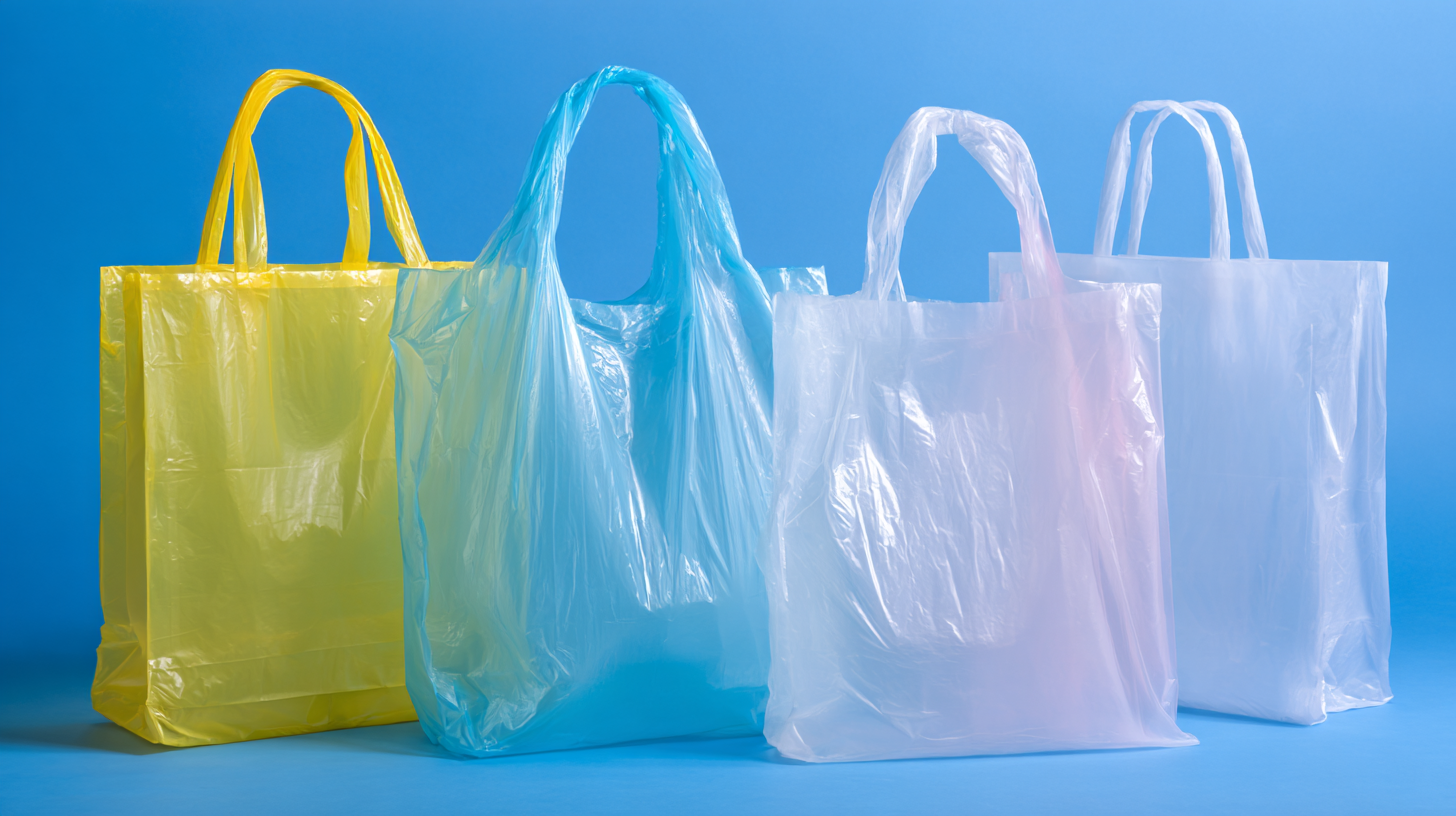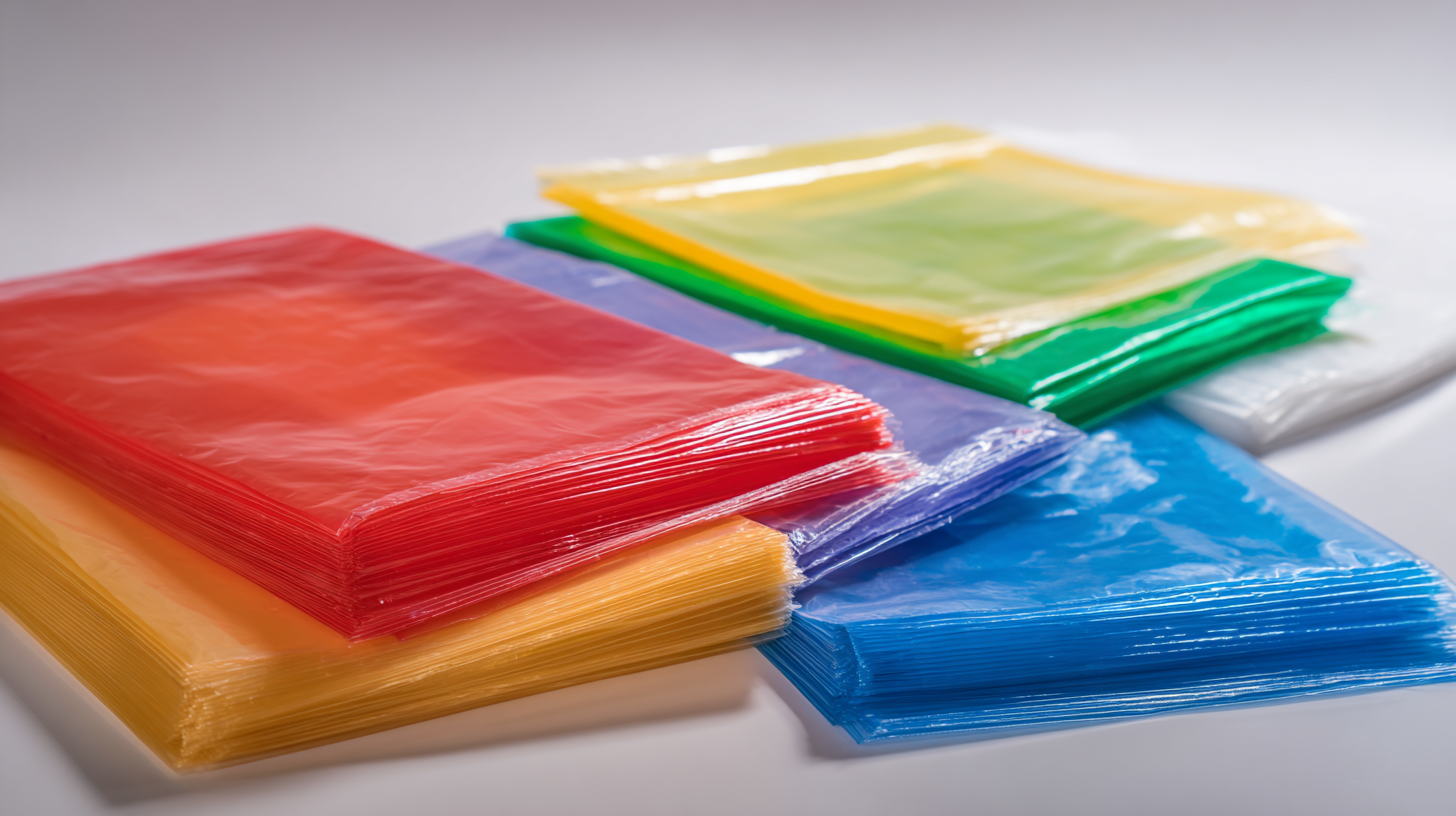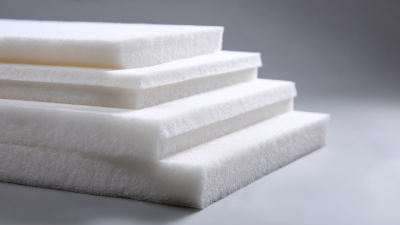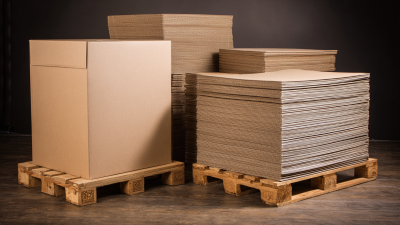In the ever-evolving landscape of packaging solutions, selecting the appropriate PE plastic bag has become paramount for businesses aiming to enhance their operational efficiency and environmental sustainability. According to a report by Smithers Pira, the global market for plastic packaging is projected to reach approximately $1.2 trillion by 2027, with polyethylene (PE) products making up a substantial share due to their versatile applications and favorable properties.

PE plastic bags are renowned for their durability, moisture resistance, and cost-effectiveness, making them ideal for a range of industries from food packaging to retail. However, with a plethora of options available in terms of size, thickness, and specialty features, it is crucial for businesses to understand their specific packaging needs. This guide will delve into the essential considerations for choosing the right PE plastic bag to meet various packaging requirements while aligning with industry standards and sustainability goals.
When choosing the right PE plastic bag for your packaging needs, it's essential to understand the different types available in the market. Polyethylene (PE) plastic bags are widely used across various industries due to their versatility and cost-effectiveness. The global plastic packaging market, valued at $431.28 billion in 2023, is expected to grow significantly, reaching an estimated $736 billion by 2032. This growth indicates a robust demand for various types of packaging solutions, including PE bags, which are crucial for businesses looking to optimize their operations.

Different PE plastic bag types serve specific applications, such as high-density polyethylene (HDPE) bags, low-density polyethylene (LDPE) bags, and bioplastics. Each type has unique characteristics suited for different packaging requirements. For instance, HDPE bags offer strength and durability, making them ideal for grocery and retail use, while LDPE bags are more flexible and commonly used in produce packaging.
Additionally, with increasing environmental concerns, biodegradable alternatives are gaining traction, driven by policies aimed at reducing reliance on traditional plastics. As a result, understanding the varied applications and properties of each type of PE bag is critical for making informed choices that align with both business needs and sustainability goals.
When choosing the right PE plastic bag for your packaging needs, it's essential to consider the environmental impact of polyethylene (PE) and its alternatives. Recent studies highlight the significant challenges posed by plastic production and pollution, which threaten global ecosystems. Life cycle assessments (LCA) reveal that while traditional PE bags and films present environmental concerns, alternatives like biodegradable mulch films and polylactic acid (PLA) plastics can offer substantial reductions in negative impacts. For instance, biodegradable mulch film is deemed a sustainable option as it enhances environmental sustainability across multiple dimensions.
**Tips**:
When selecting a plastic bag, consider opting for biodegradable or recyclable materials whenever possible. Explore options that have undergone a thorough life cycle assessment to understand their overall environmental footprint. Additionally, consider the specific usage and disposal scenarios for your bags to ensure they align with your sustainability goals.
Moreover, be mindful of the entire lifecycle of your packaging. Research indicates that replacing traditional plastic options with biodegradable alternatives may not only reduce pollution but also maintain functionality in agricultural and industrial applications. Choose materials that balance performance with ecological responsibility to make informed decisions tailored to your needs.

When selecting the right polyethylene (PE) plastic bag for your packaging needs, it is essential to consider several key factors that can impact durability and functionality. The mechanical properties of the plastic are crucial; bags made from high-density polyethylene (HDPE) generally offer superior strength and puncture resistance compared to low-density polyethylene (LDPE). This makes HDPE bags particularly suitable for heavy or sharp-edged items, ensuring that they remain intact during transport and storage.
Additionally, the application of these bags within the context of sustainability cannot be overlooked. With ongoing discussions surrounding the recycling of plastics and the environmental impact of plastic waste, choosing PE bags that are designed for recyclability is critical. Innovations in plastic recycling technologies and the increasing shift towards a circular economy can enhance the life cycle of these materials.
Furthermore, it’s important to consider the potential migration of chemicals from the plastic into packaged goods, particularly in food packaging applications. Ensuring the bags meet safety and regulatory standards will be vital for both consumer health and brand integrity.
When analyzing the cost-effectiveness of PE plastic bags for various packaging solutions, it’s essential to consider the balance between material costs and functionality. According to a report from the Plastics Industry Association, polyethylene (PE) accounts for nearly 34% of the total plastic production worldwide, highlighting its popularity due to its affordability and versatility. The average cost of PE plastic bags ranges from $0.01 to $0.05 per bag, making them an attractive option for businesses looking to optimize their packaging expenses without sacrificing quality.
Moreover, the durability of PE bags contributes to their cost-effectiveness. A study published by Smithers Pira revealed that well-designed PE plastic bags can reduce product damage during transit by up to 20%, ultimately saving companies on returns and replacements. This efficiency in protection paired with lower manufacturing costs makes PE plastic bags a preferred choice for many industries, including retail and food packaging. Understanding how these bags perform relative to their cost ensures that businesses can make informed decisions, maximizing both economic and practical factors in their packaging strategy.
This chart compares the cost-effectiveness of different types of PE plastic bags used for packaging various products. The data represents the average cost per unit versus the durability for different bag types.
When selecting the appropriate polyethylene (PE) plastic bag for your packaging needs, understanding regulatory compliance and standards is essential. Various regions mandate specific guidelines regarding the production, use, and disposal of plastic bags to minimize environmental impact and safeguard public health. For instance, the United States has the Environmental Protection Agency (EPA) that oversees the regulations surrounding plastic materials, mandating manufacturers to adhere to specific safety and environmental standards.
Additionally, the European Union has implemented directives requiring biodegradable and recyclable packaging solutions. Compliance with these regulations not only ensures legal adherence but also enhances your brand's reputation by demonstrating commitment to sustainability.
It is crucial to familiarize yourself with the local regulations, as they can vary widely, impacting choices like bag thickness, material properties, and the intended use of the bags. Engaging with suppliers who understand and comply with these standards can be a vital resource in navigating the complexities of regulatory requirements in your packaging strategy.






